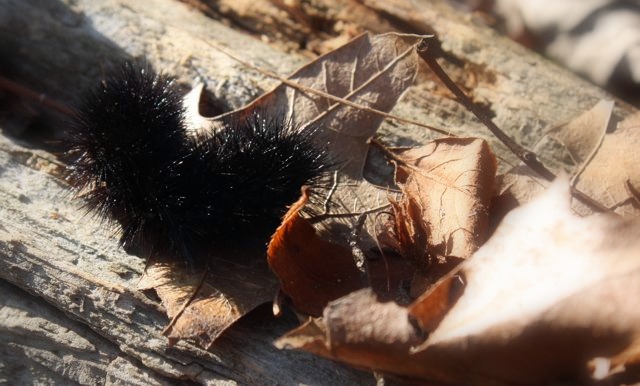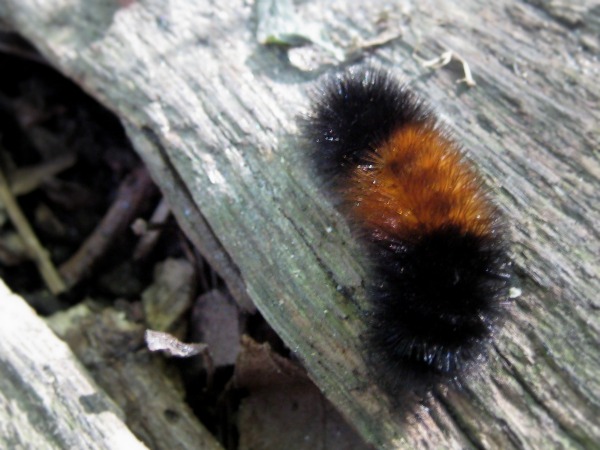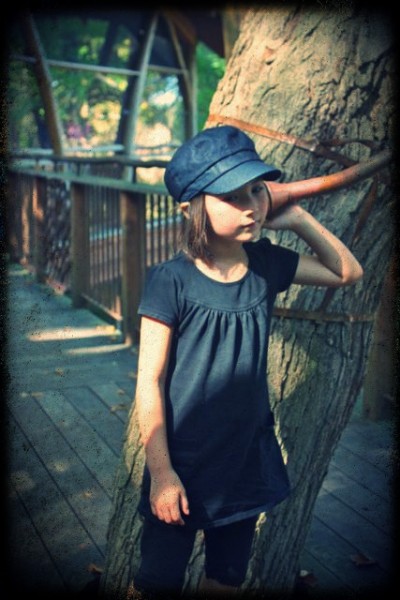The trouble with weather forecasting
is that it’s right too often for us to ignore it
and wrong too often for us to rely on it.-Patrick Young
QUICK FUN FACTS FOR THE DAY:
- The legend of the woolly bear is: if the brown stripe is longer than the black, we get a mild winter.
- I found this one a few days ago and he is ALL BLACK.
- But before you get all worked up about next winter:
- Turns out all woolly bears start out black and then develop a slowly-lengthening brown band as spring and summer and fall pass by. So how brown a woolly bear is in fall (when we would tend to note that sort of thing) is actually an indication of how severe last winter was; i.e. how early in the season it warmed enough to hatch out.
- Also turns out woolly bears like to play dead, so I’m hoping I didn’t kill this one like I thought I did, moving him into the sunlight for his close-up.
- I photographed this woolly bear below in October of 2008. In the post, I mention that I’d seen another that was much more brown.
That winter, Dec 08 through Feb 09, temps were near average across the contiguous United States, based on records dating back to 1895.
The United States experienced its fifth driest December-February period on record. NJ and DE had their driest February on record.
Do with that what you will 🙂 and let me know if you see any woolly bears!













Hi
Walked out my door this evening to take dog for last walk of the day and wala
there it was
a wooly bear on July 22, 11
I had to check twice to make sure I was seeing the right insect.
And did some online research which said they are really not suppose to be around till Oct. WHCh has me a lot concerned. This area is in the middle of a horrific heat wave and drought after a bountiful spring.
So I brought the little fella inside gave him a habitat cannot wait for my gkids to see it, from the rsearch I have done it appears that as long as I feed it and sustain it I can re release IT once it spins its cocoon
another backyard naturalist